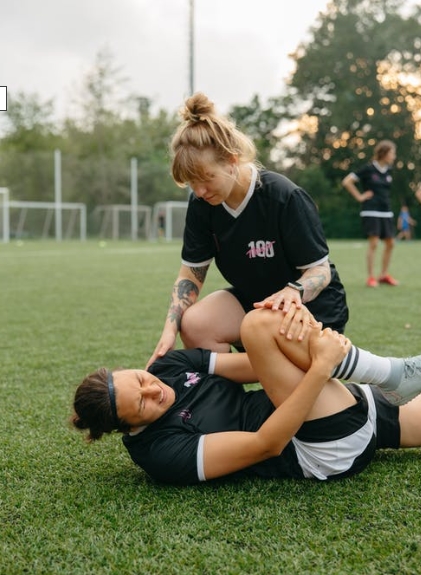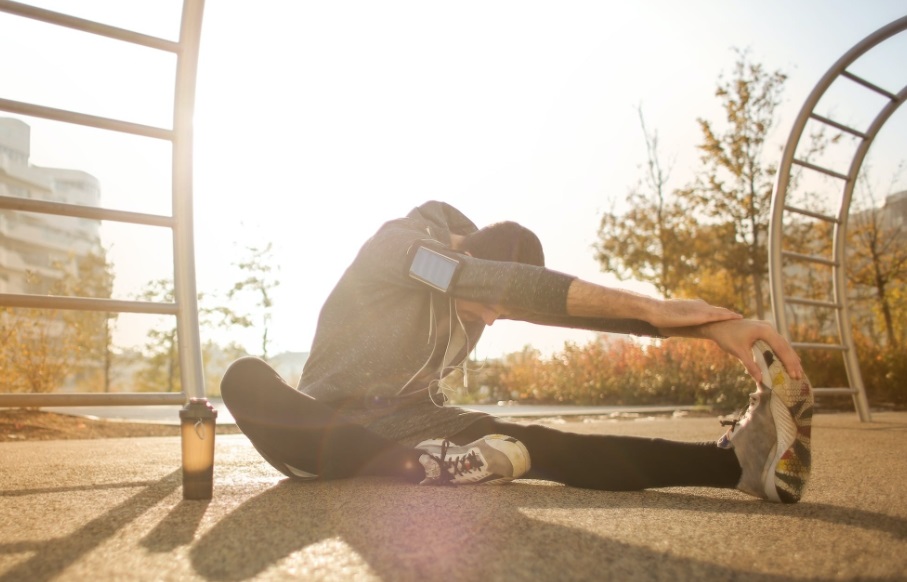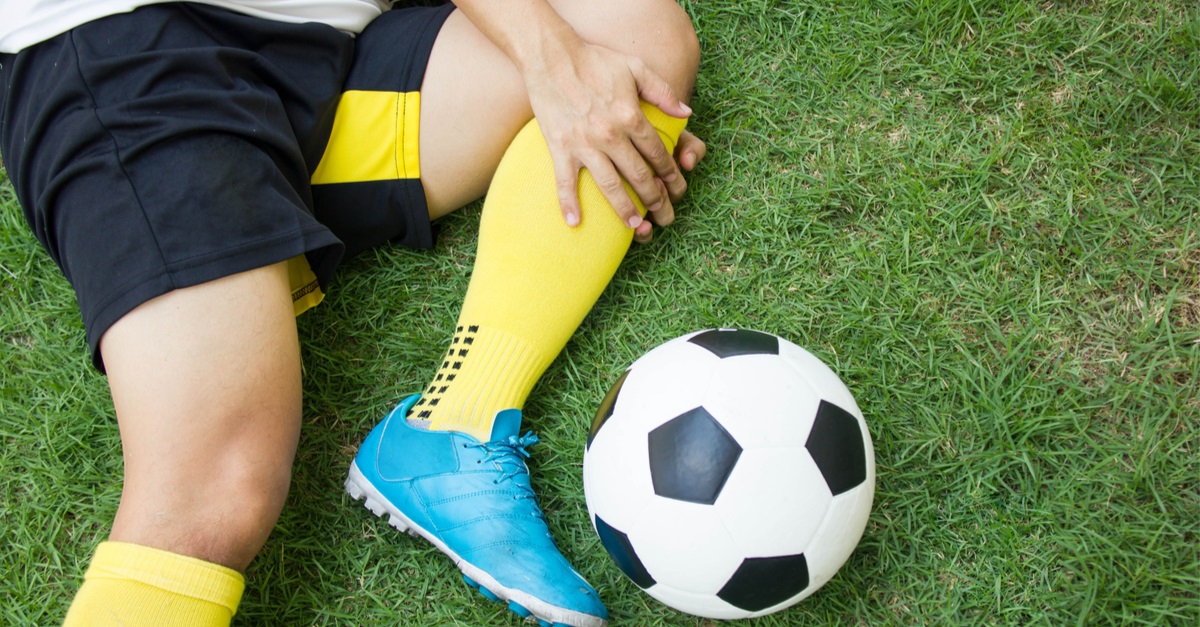Last Updated on October 20, 2022 by admin
When you accidentally kick the coffee table when working out or drop a dumbbell on your foot, you need n soothsayer to explain why ypu wee injured. This isn’t always the case when you get hurt in the middle of an exercise that makes you limp to the sidelines, wondering how you did in your hamstring. You might also be wondering why certain tendons or muscles are achy.
Why do These Injuries Happen?
Various factors can trigger sport injuries. These factors includeweakness in ligaments, tendons, muscles, structural abnormalities, unsafe workout environments, and poor training methods. The most common cause of sports injuries is inadequate training. The muscles, for instance, require 48 hours of recovery after working out. Additionally, if you engage in intense workouts too quickly and do not take a break when pain develops, you could end up having an injury.
Another reason is that everyone has a different body structure, with their bone architecture being a little different. Every individual has a couple ofweak spots where the muscle and bone arrangement are prone to injury. A couple of predisposing factors to injuries in the hips, knees, legs, and ankles include:
- Over high arches
- Knock-knee or bowlegged alignment
- Flatt feet or excess pronation
- Uneven leg length
Pronation can be defined as the inward rolling of a foot after its heel hits the ground. This typically happens before the weight gets shifted to the ball of the foot. When the foot rolls inward, the shock of the impact with the ground is spread. If the foot rolls a little too quickly, it could cause uneven stress on the ligaments and muscles higher in that leg.

And while having an extremely flexible foot and ankle can result in excessive pronation, having an ankle that’s too rigid could result in a cavus foot. Cavus foot is when the arch is higher than it should be since the foot doesn’t flatten inwards when you place weight on it. An individual with this foot is at a higher risk of fractures because their foot is a poor shock absorber.
Uneven leg length could lead to awkward running. This, in turn, increases the chances of injury; however, individuals with equal length legs also suffer from similar issues when they run on a roadside or titled tracks higher in the center. This causes the hip on the side of the leg that hits the more elevated surface to suffer more strain.
As their name states, overuse injuries are caused by microscopic repeated injuries to a specific part of the body. Several long-distance runners experience overuse injuries even after they quit running. For road runners, running over hard or uneven surfaces can be repetitive.
Additionally, there are usually a lot of downhill and uphill elements which add more stress to the muscles and tendons in the lower legs. You are more likely to develop running-related injuries if you wear the wrong running shoes. It is essential to use footwear that doesn’t promote side-to-side movement of the heel. It should also provide adequate support to the foot.
The above are a few reasons why sports injuries happen. However, there area few ways to combat this.
Tips to Prevent Sport Injury
1. Always Stretch
Experts state that you should be stretching multiple times a day. This, however, doesn’t mean you drop into a stretch pose right in the middle of a meeting. It does mean that you should stretch both before and after workouts since each period requires varying stretches.
How to Stretch Better
A pre-workout stretch can help you identify tense muscles. This can help you protect those muscles when working out instead of simply going blind into a movement. Stretching can also help improve your flexibility by encouraging the joints to go through their full range of motion. The most effective way to stretch before your workout is to choose dynamic stretches. There used to be negative connotations associated with pre-workout stretches, with one, in particular, which assumes that stretching before exercises could cause the muscles to fire, which could then cause performance output to decrease.
2. Get More Rest
One of the essential things about exercising properly is getting adequate rest. It might feel silly to do so, but sitting out a set or switching to an easy exercise from a more advanced one can sometimes be necessary as it helps avoid injuries during training. While you might feel that your reputation has taken a hit, that is a lot better than dealing with a muscle tear.
Ways to Rest Smarter
If you are undecided about going back in for another set or simply trying a high-intensity workout, you should always slow it down. Slowing it down gives you the time to double-check your body alignment and your technique. With this, you get to know that what you are doing isn’t too demanding on your body.
For instance, workouts requiring speed-strength cause the muscles to fire quicker, which could mean an increased risk of tearing. Taking your time to go slowly provides enough time for the other muscle fibers in your body to handle and support the workload. If your body tells you to take a breather, then it is always best to do just that. Depending on how much you exert yourself, you might need to take the entire day off or even devote a whole week to your recovery.
3. Do a Proper Warm-Up
Conducting a proper warm-up goes a lot further than simply priming your body for exercise. It helps to improve your performance and ensure you don’t get injured while working out.
An excellent general warm-up elevates your heart rate. At the same time, a body-specific one uses similar movements and biomechanics to target the muscle groups that will be used in the exercises.
How to Warm-Up
When it comes to warming up, there is no wrong or right way, which makes the idea of an improper warm-up subjective. The way you warm up depends on you. The interval for a warm-up is also person-specific. This means only you can decide when you have warmed up enough.

With this, if you choose to eliminate a warm-up from your routine, you will not loosen your muscle and joints sufficiently. For instance, you can slowly progress from a squat to a lunge to warm up your muscles. Not adequately preparing for these movements could cause something to go wrong.
4. Understand the Difference Between Bad and Good Soreness
Before working out, you must understand the difference between bad and good soreness. There are some reasons why you need to know this. For one, it can help you prevent soreness from getting worse, detect an injury, or stop you from getting injured while working out.
Bad soreness is typically recognized by its radiating sensation. It generally is a localized irritation or continual disruption. On the other hand, good soreness isn’t radiating, stinging, shooting, or sharp. It simply feels like it is a part of the muscle movement.
How can You Detect Soreness?
For one, soreness in the joints isn’t a good sign. Joint pain results from a lack of lubrication, recovery, or hydration. It can also be a result of some form of injury. If you feel some discomfort or radiating sensation in your joints, it is a great idea to reassess how you approach working out and recovery. You will also need to pay critical attention to your form, especially the utilized body parts. To help reduce muscle inflammation and soreness, you can ice down the injury.
5. Remain Hydrated
As it is scientifically known, dehydration or hypohydration can lead to coordination and focus loss when you are less focused on the task. Consequently, this could make you prone to making seemingly avoidable mistakes, resulting in injury.
Additionally, dehydration causes lower level of performance, making you more likely to become injured. This happens because the muscle can’t do a full range of motion. A few symptoms associated with dehydration are light-headedness, fatigue, and headaches. Moreover, nutritional studies have shown that even slight decreases in hydration levels can make an individual more irritable.
How to Stay Hydrated
There isn’t a magic rule or particular amount of water you need to drink daily when it comes to remaining hydrated. Everyone at one point or another has been told in the past to “drink eight glasses of water per day”; however, this has been dismissed by new studies. Before having a drink of water, you need to check your urine. If your urine is dark in color, resembling ice tea, then you need to drink a glass of water. If your urine is anything from pale yellow to almost transparent, then you are fine.

